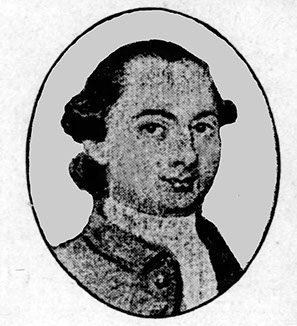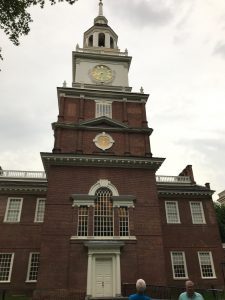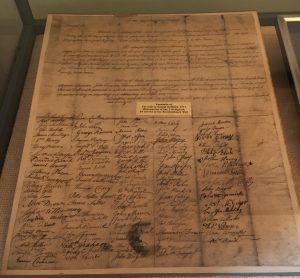

William Hurrie was probably in a “hurry” when he ascended the stairs of the State House in Philadelphia (Independence Hall) on July 8, 1776. He was going to ring the bell now known as the Liberty Bell to signal that the Declaration of Independence had been finalized and would be read.
He may also have been in a “hurry” to help get the Liberty Bell out of Philadelphia when the townsmen removed the bell and others in the city to keep them out of the hands of the British. The patriots didn’t want the British to melt down the bells and make them into cannonballs. It is known that the Liberty Bell was snuck out of Philadelphia and hid under the floor of a church in the Allentown area. However, it isn’t documented as to whether William was part of the effort. However, it seems very likely given he cared for the State House.

William may have also been in a “hurry” when he signed the call for Reverend George Duffield at the Presbyterian Church on Pine Street (now known as Old Pine Presbyterian Church). Why? He may have had duties at the church or perhaps it was just coincidence, but he was one of the first men to sign the document.
So, Why Hurrie?
Many names originated from a location, a trade, or another name. For example, people who lived near a grove of Ash trees might have been given the name Ash. Similarly, someone who made barrels might have gained the name Cooper. And, of course, the ever common names that are a representation of “son of” or “daughter of” a specific person. Thus, it seems reasonable to assume that the name Hurrie is simply a version of the word “hurry” and has the same meaning.
However, despite speculation as to the origin of the name Hurrie, I have found no one that indicated that it might have anything to do with rushing. Instead, information on the name specifies that it one of the forms of the name Urri, which first appeared in Ayrshire, Scotland around 1260. The name took on several forms including: Urri, Urie, Ure, Urey, Urry, Orry, Ourry, Hurrie, Hurry, Horrey, Orrey, and Hurrey.
The names Hurry, Hurrie, and Hurrey appear to be more popular in England than Scotland, although specific spellings are not used exclusively in any location. And, none of the names are among the most common in the United Kingdom or the United States.

Now, Back to William
William is said to have been born in Scotland in 1721, which is consistent with where the name originated. He personally used the “Hurrie” spelling and some members of the family and his tombstone used the “Hurry” spelling.
He immigrated to America by the 1750s. However, no records have been found in this regard. It is unknown exactly when and where he married Mary (surname unknown) or where his children were born.
The earliest record for William is a tax record in 1769 in Southwark, which is an area only a short-distance from Independence Hall and Old Pine Church.
In the early 1770s, he begins to show up in records at the Presbyterian Church, where he was selected as sexton. Part of his job was to collect pew rents from church members. It is said that pew selection was often by social status. However, looking at the records from Old Pine, it appears that it is based on financial status or willingness to pay, as the pews at the front are more expensive than those further back. William’s sons-in-law were in pew 70 in 1773 and later moved to pew 83 indicating that they were of less social or financial status.
It was at the Presbyterian Church, now known as Old Pine Church, where William began rubbing shoulders with many Revolutionary patriots. It is likely that his connections at the church led to him ringing the Liberty Bell that day in 1776 and serving as doorkeeper to Congress in the years following.
Read more about William Hurrie’s fame as ringer of the Liberty Bell . . . . here.